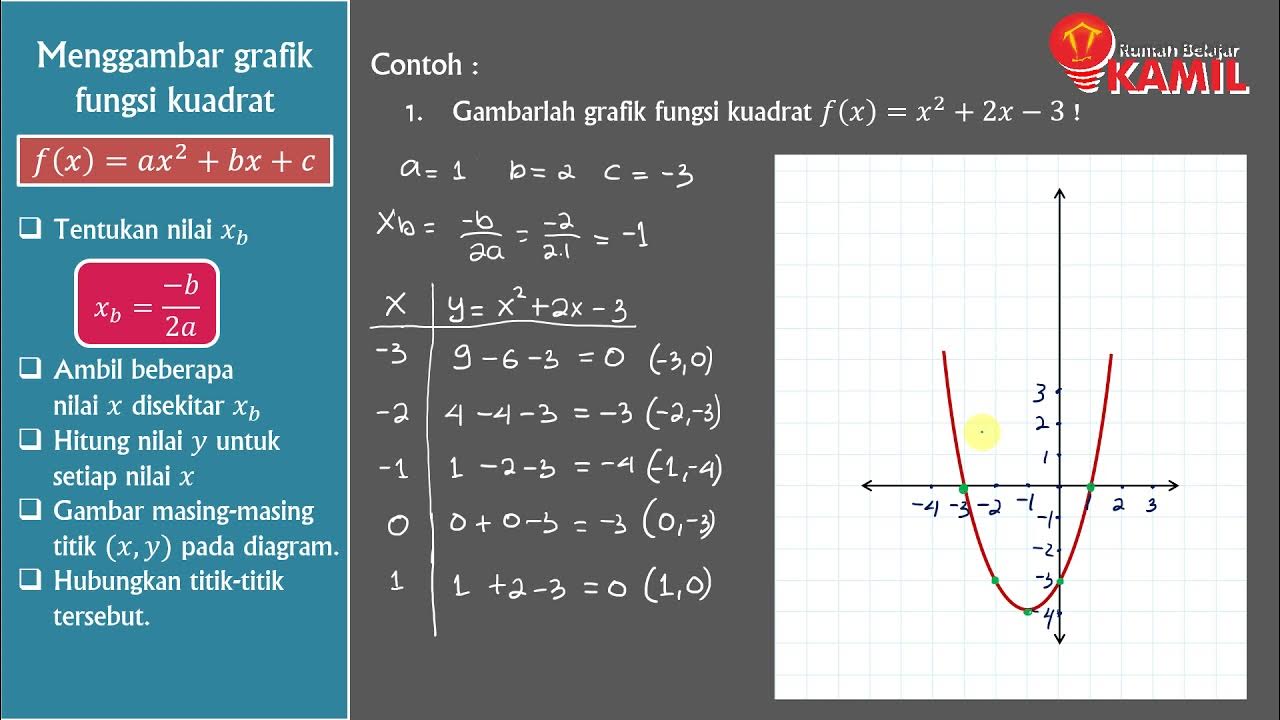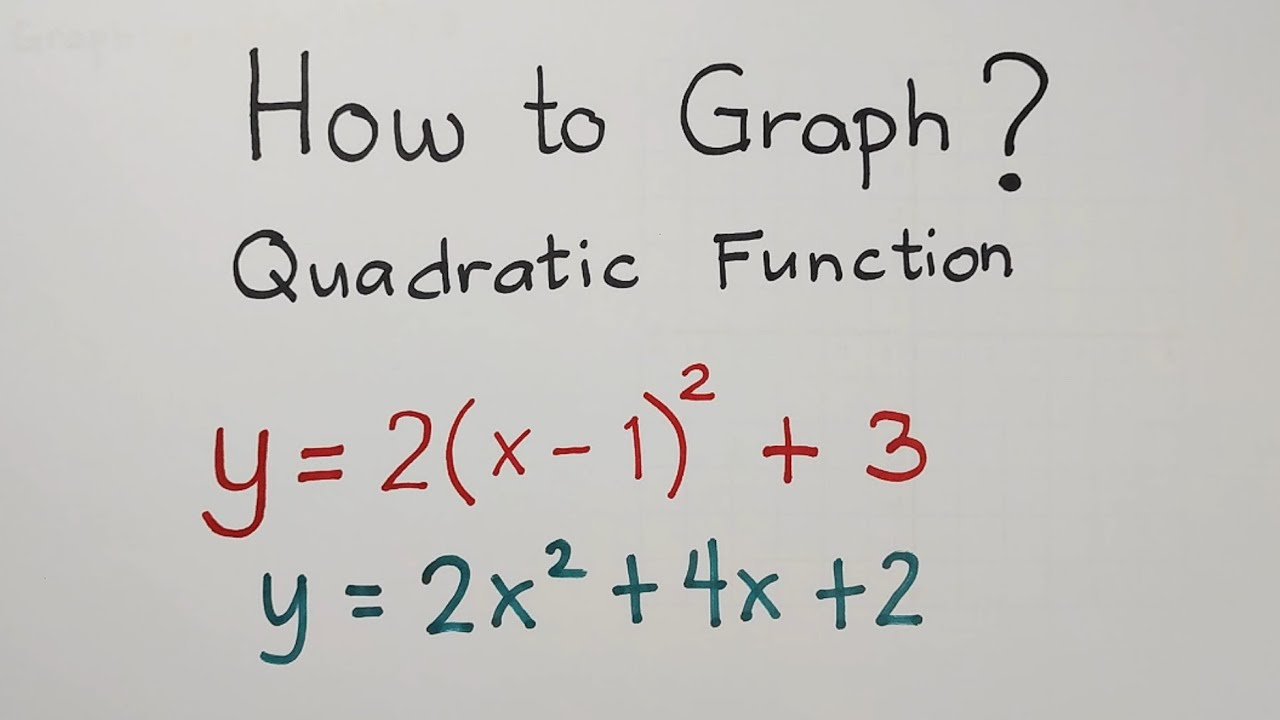Learn how to graph an absolute value equation by identifying the vertex first
Summary
TLDRThis educational video script focuses on graphing absolute value equations, emphasizing the importance of identifying the vertex as the first step. The vertex is crucial for understanding the graph's horizontal shift, in this case, three units to the right. The script explains how the value of 'a' affects the graph's direction and slope, with 'a' being 4, indicating a downward opening graph. The concept of slope, or the rate of change, is discussed, illustrating how the graph's shape is influenced by the absolute value being greater than one, resulting in a vertical stretch.
Takeaways
- 📌 The key to graphing absolute value equations is identifying the vertex first.
- 🔢 The vertex form is given as (h, k), and in this case, k is zero with h being three, indicating a horizontal shift to the right.
- 📈 The graph of the absolute value function is initially symmetrical and V-shaped, with the vertex at the origin (0, 0).
- 🔄 The value of 'a' in the absolute value function |x - h| affects the graph's direction and slope. Here, 'a' is 4, indicating a downward opening graph.
- ↕️ The slope of the graph is determined by the value of 'a'. With 'a' being 4, the graph has a slope of 1/4, causing it to descend.
- 🔽 The graph descends four units over one unit to the left and right, forming a V-shape.
- 🤔 The absolute value of 'a' being greater than one results in a vertical stretching or horizontal compression of the graph.
- ✅ The instructor confirms understanding by asking if the audience follows the process of finding the vertex and graphing the function.
- ❓ The audience's response is sought to ensure clarity and engagement with the material presented.
Q & A
What is the primary step when graphing absolute value equations?
-The primary step when graphing absolute value equations is identifying the vertex first.
What is the standard form of the vertex in an absolute value equation?
-The standard form of the vertex in an absolute value equation is (0,0).
How is the vertex of the graph affected if the absolute value of 'a' is greater than one?
-If the absolute value of 'a' is greater than one, the graph is vertically stretched or compressed horizontally.
What does the value of 'H' represent in the vertex form of an absolute value equation?
-In the vertex form of an absolute value equation, 'H' represents the horizontal shift of the graph.
What is the vertex of the graph described in the transcript?
-The vertex of the graph described in the transcript is (3,0), indicating a horizontal shift of three units to the right.
What does the value of 'a' signify in the context of the parent graph of an absolute value equation?
-The value of 'a' in the context of the parent graph of an absolute value equation signifies the slope of the graph and whether it opens upwards or downwards.
How does the value of 'a' being greater than one affect the graph of the absolute value equation?
-When the value of 'a' is greater than one, the graph of the absolute value equation is reflected over the x-axis, causing it to open downwards instead of upwards.
What is the slope of the lines forming the V-shape in the graph of an absolute value equation?
-The slope of the lines forming the V-shape in the graph of an absolute value equation is one over one, meaning for every unit you go up, you go one unit over.
What does the term 'V' in the transcript refer to in the context of the graph?
-The term 'V' in the transcript refers to the V-shape that the graph of an absolute value equation forms due to the absolute value function.
How does the absolute value of 'a' greater than one influence the shape of the graph?
-When the absolute value of 'a' is greater than one, it causes the graph to be vertically stretched, resulting in a steeper V-shape.
What is the significance of the value '4' mentioned in relation to the graph?
-The value '4' mentioned in the transcript is the absolute value of 'a', which indicates that the graph is vertically stretched, opening downwards with a slope of one over one.
Outlines

このセクションは有料ユーザー限定です。 アクセスするには、アップグレードをお願いします。
今すぐアップグレードMindmap

このセクションは有料ユーザー限定です。 アクセスするには、アップグレードをお願いします。
今すぐアップグレードKeywords

このセクションは有料ユーザー限定です。 アクセスするには、アップグレードをお願いします。
今すぐアップグレードHighlights

このセクションは有料ユーザー限定です。 アクセスするには、アップグレードをお願いします。
今すぐアップグレードTranscripts

このセクションは有料ユーザー限定です。 アクセスするには、アップグレードをお願いします。
今すぐアップグレード関連動画をさらに表示

Matematika Kelas 9 : Fungsi Kuadrat (Part 3 : Menggambar grafik fungsi kuadrat)

GRAFICAR ECUACIONES CUADRÁTICAS Parte 2 Super facil - Para principiantes

How to Graph a Quadratic Function? Quadratic Function, Vertex, Axis of Symmetry and Parabola

Kurikulum Merdeka Matematika Kelas 9 Bab 1 Sistem Persamaan Linear Dua Variabel

Grafik Garis Lurus

Grafik Garis Lurus Hal 207-219 Bab 5 Persamaan Garis Lurus Kelas 8 Kurikulum Merdeka Belajar
5.0 / 5 (0 votes)
